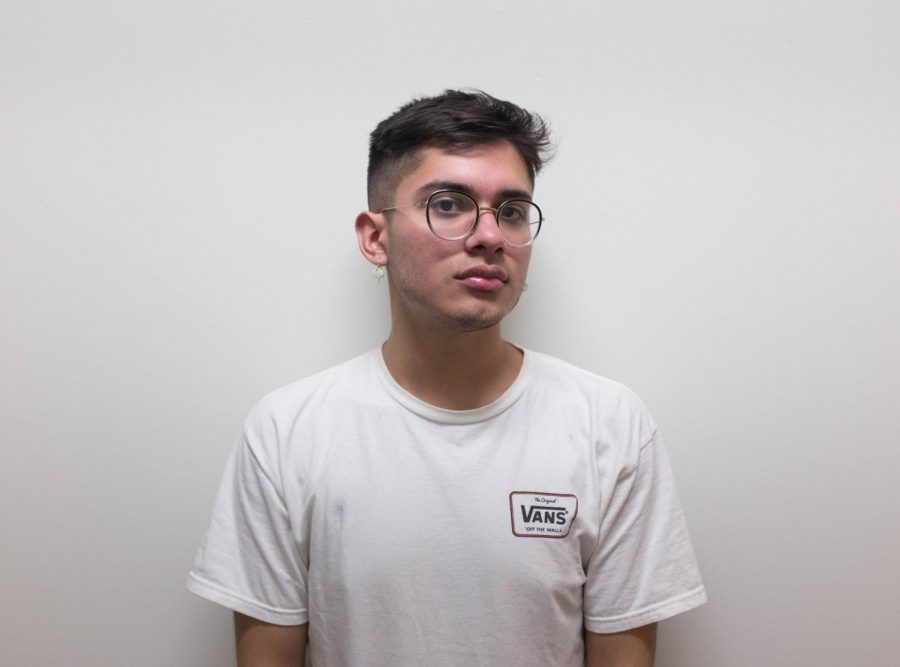Your Shoes Are Classist, And So Are You
April 27, 2018
You see them every day, probably. They’re ugly, but we’re expected to believe they’re a subversive type of ugly, emblematic of revolutionary sentiments and avant-garde innovations in fashion and culture itself. Yes, I mean the Balenciaga Triple S Trainers. People that sport this clunky, worn-in footwear probably don’t realize that their ironically and offensively expensive apparel choices are actually a part of a tradition of cultural appropriation.
This generation of wannabe-socially-conscious, dirty-denim-clad millennials is certainly not a recent development. Melisa Gray-Ward, a contributing writer for i-D, explains that young men of the English aristocracy would dress several leagues below their prescribed class in a futile attempt to rebel against the system they benefited from.
For the past decade — some argue since the global financial crisis that befell us in 2008 — socioeconomically-endowed youth, most often white, have been redefining not only what is socially acceptable, but what is celebrated and considered countercultural. Disillusionment with companies that couldn’t keep their finances in check and a desire to discover what’s next in edginess and beauty has raised up a denomination of well-to-do millennials that pride themselves on being socially enlightened and naturally inclined to enjoy things outside of the mainstream.
But I don’t think many people are aware of how much this culture is derived from the realities of being poor or a member of the working class. And to be quite candid, I don’t mean working class as in, “your legal guardians have to work to support your family,” because by that definition, we’re all working class, save the people at the absolute top of the tax brackets. I mean, for better or worse, people who do manual labor for a living, people that can’t afford vacations, or adequate healthcare, for that matter, let alone haute couture shoes that retail for $795 and cost half the rent for my house back on Long Island.
The Balenciaga sneakers don’t even win the rusted medal for most egregious display of cultural appropriation, with stunts like the one pulled by Louis Vuitton back in 2008, when it unveiled the Urban Satchel — a bag made out of bags priced at $45 thousand. Other fashion giants like Nordstrom have flexed “urban” stylings like denim jeans caked with fake mud stains for hundreds of dollars.
My foremost point is that this is a form of a cultural appropriation: poor culture. I notice that the argument of appropriation in haute couture and other aspects of society is often framed in terms of white people stealing black and East Asian fashion trends, but I want to expand the argument further, and argue that people should be more conscious of what they’re doing when they decide to abandon their comfortable lives of white-collar suburbia and move into neighborhoods that used to be invariably identified as “slums.” Poor communities, which we all know are most often populated by black people and Latin Americans, have been scrutinized for years and accused of sucking the welfare system dry. These people and other poor denizens of suburban communities spend their entire lives working and schooling for the possibility of some upward mobility so that they can finally leave their drab and — for many — harmful lifestyles behind. For these people, wearing thrifted, ugly, ill-fitting clothes and living in these socioeconomically unsubsidized spaces isn’t a choice, nor are they that fond of the conditions we’ve endured.
Explore other aspects of the true poor person’s life, and you’ll see that inadequate diets, housing and healthcare are all overarching obstacles in the poor person’s experience. Yet somehow this painful and dehumanizing way of life has been adopted by restaurants, bars, venues and countless people that now identify with what was previously considered to be ugly and unfashionable.
“Of course, the suburban kids are just looking for something soulful, because god knows, the glorious lack of challenges they experienced as children never gave them any idea of how adversity creates a common identity and a true semblance of ethnic culture or anything,” James Swift, a writer for Thought Catalog, said.
Swift also makes the important distinction between poor white culture and poor culture prevalent in black communities. He acknowledges that while poorness within black culture is often fetishized and repurposed by white people as a gritty and urban aesthetic, poor white culture is written off as the backwater, the product of self-inflicted ignorance and gluttony. He goes on, rather vitriolically, to state that left without any more culturally divergent groups to rip off, privileged whites have turned on their own kind: appropriating poor white culture with DIY aesthetics and adopting lifestyles that revel in all the tragic beauty of being poor while enduring none of the tangible effects of living in poverty. Although, I will counter his argument about poor white culture and say that people of color are also very familiar with this struggle of searching for a cultural identity in a society that’s dominated by people blithely wrapped up in opulent lifestyles.
Initially, the problems with poverty-culture appropriation seem shallow at best. After all, if rich girls want to decorate themselves with mullets and safety pin earrings and utilitarian denim jeans, then they have every right to. If rich guys want to drink cans of lukewarm beer and thrift wardrobes of oversized mothball-colored T-Shirts from Goodwill with their grandparents’ money, no one can really stand in their way (as it often goes with advantaged men). But the fact of the matter is that this permission has allowed these young folks, blissfully ignorant of what it means to not have a choice — because choices are expensive — to infiltrate underserved communities throughout the city. The gentrification of entire neighborhoods has become the gentrification of lifestyles, and vice versa. The longer we normalize the the invasion of poor culture, the more irreversible the effects of this coopting become.
Opinions expressed on the editorial pages are not necessarily those of WSN, and our publication of opinions is not an endorsement of them.
Email Alejandro Villa Vásquez at [email protected].














































































































































Mujtaba Khan • Mar 6, 2019 at 5:43 pm
This has to be one of the most ignorant, pseudo-intellectual pieces of work I’ve read so far. You know the human experience is multifaceted and not linked simply to your tax bracket, right?
Dehumanizing people by saying they lack culture and can’t “experience adversity” because of a lack of poverty is incredibly ignorant, wealth has no correlation on whether you are cultured or not, grow up and stop complaining about every little thing you see.
Olivia • Apr 27, 2018 at 6:09 pm
This is a really great article, bravo Alejandro.